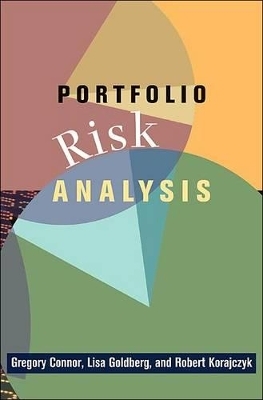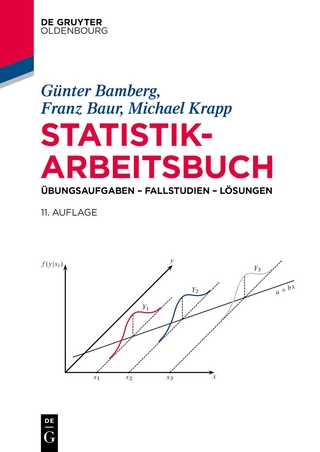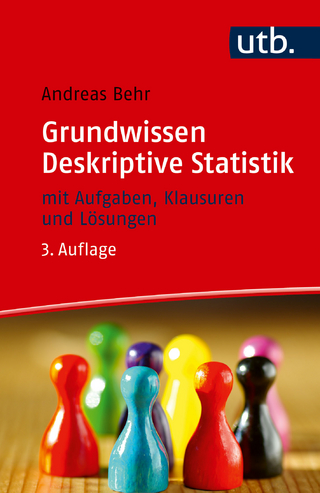
Portfolio Risk Analysis
Princeton University Press (Verlag)
978-0-691-12828-3 (ISBN)
Portfolio risk forecasting has been and continues to be an active research field for both academics and practitioners. Almost all institutional investment management firms use quantitative models for their portfolio forecasting, and researchers have explored models' econometric foundations, relative performance, and implications for capital market behavior and asset pricing equilibrium. Portfolio Risk Analysis provides an insightful and thorough overview of financial risk modeling, with an emphasis on practical applications, empirical reality, and historical perspective. Beginning with mean-variance analysis and the capital asset pricing model, the authors give a comprehensive and detailed account of factor models, which are the key to successful risk analysis in every economic climate. Topics range from the relative merits of fundamental, statistical, and macroeconomic models, to GARCH and other time series models, to the properties of the VIX volatility index. The book covers both mainstream and alternative asset classes, and includes in-depth treatments of model integration and evaluation.
Credit and liquidity risk and the uncertainty of extreme events are examined in an intuitive and rigorous way. An extensive literature review accompanies each topic. The authors complement basic modeling techniques with references to applications, empirical studies, and advanced mathematical texts. This book is essential for financial practitioners, researchers, scholars, and students who want to understand the nature of financial markets or work toward improving them.
Gregory Connor is professor of finance at the National University of Ireland, Maynooth, and senior research associate at the London School of Economics and Political Science. Lisa R. Goldberg is executive director of analytic initiatives at MSCI Barra and adjunct professor of statistics at the University of California, Berkeley. Robert A. Korajczyk is professor of finance at Northwestern University.
Acknowledgments xi Introduction xiii Key Notation xix Chapter 1: Measures of Risk and Return 1 1.1 Measuring Return 1 1.2 The Key Portfolio Risk Measures 6 1.3 Risk-Return Preferences and Portfolio Optimization 12 1.4 The Capital Asset Pricing Model and Its Applications to Risk Analysis 23 1.5 The Objectives and Limitations of Portfolio Risk Analysis 31 Chapter 2: Unstructured Covariance Matrices 36 2.1 Estimating Return Covariance Matrices 36 2.2 The Error-Maximization Problem 47 2.3 Portfolio Choice as Decision Making under Uncertainty 54 Chapter 3: Industry and Country Risk 61 3.1 Industry-Country Component Models 61 3.2 Empirical Evidence on the Relative Magnitudes of Country and Industry Risks 73 3.3 Sector-Currency Models of Corporate Bond Returns 77 Chapter 4: Statistical Factor Analysis 79 4.1 Types of Factor Models 79 4.2 Approximate Factor Models 82 4.3 The Arbitrage Pricing Theory 86 4.4 Small-n Estimation Methods 88 4.5 Large-n Estimation Methods 93 4.6 Number of Factors 98 Chapter 5: The Macroeconomy and Portfolio Risk 101 5.1 Estimating Macroeconomic Factor Models 101 5.2 Event Studies of Macroeconomic Announcements 110 5.3 Macroeconomic Policy Endogeneity 112 5.4 Business Cycle Betas 115 5.5 Empirical Fit and the Relative Value of Macroeconomic Factor Models 116 Chapter 6: Security Characteristics and Pervasive Risk Factors 117 6.1 Equity and Fixed-Income Characteristics 117 6.2 Characteristic-Based Factor Models of Equities 122 6.3 The Fama-French Model and Extensions 130 6.4 The Semiparametric Approach to Characteristic-Based Factor Models 132 Chapter 7: Measuring and Hedging Foreign Exchange Risk 134 7.1 Definitions of Foreign Exchange Risk 134 7.2 Optimal Currency Hedging 142 7.3 Currency Covariances with Stock and Bond Returns 149 7.4 Macroeconomic Influences on Currency Returns 151 Chapter 8: Integrated Risk Models 155 8.1 Global and Regional Integration Trends 155 8.2 Risk Integration across Asset Classes 158 8.3 Segmented Asset Allocation and Security Selection 159 8.4 Integrated Risk Models 162 Chapter 9: Dynamic Volatilities and Correlations 167 9.1 GARCH Models 167 9.2 Stochastic Volatility Models 178 9.3 Time Aggregation 180 9.4 Downside Correlation 181 9.5 Option-Implied Volatility 184 9.6 The Volatility Term Structure at Long Horizons 187 9.7 Time-Varying Cross-Sectional Dispersion 188 Chapter 10: Portfolio Return Distributions 191 10.1 Characterizing Return Distributions 191 10.2 Estimating Return Distributions 196 10.3 Tail Risk 203 10.4 Nonlinear Dependence between Asset Returns 207 Chapter 11: Credit Risk 212 11.1 Agency Ratings and Factor Models of Spread Risk 213 11.2 Rating Transitions and Default 217 11.3 Credit Instruments 218 11.4 Conceptual Approaches to Credit Risk 220 11.5 Recovery at Default 232 11.6 Portfolio Credit Models 232 11.7 The 2007-8 Credit-Liquidity Crisis 238 Chapter 12: Transaction Costs and Liquidity Risk 241 12.1 Some Basic Terminology 241 12.2 Measuring Transactions Cost 246 12.3 Statistical Properties of Liquidity 261 12.4 Optimal Trading Strategies and Transaction Costs 266 Chapter 13: Alternative Asset Classes 271 13.1 Nonsynchronous Pricing and Smoothed Returns 271 13.2 Time-Varying Risk, Nonlinear Payoff, and Style Drift 284 13.3 Selection and Survivorship Biases 291 13.4 Collectibles: Measuring Return and Risk with Infrequent and Error-Prone Observations 295 13.5 Summary 298 Chapter 14: Performance Measurement 299 14.1 Return-Based Performance Measurement 299 14.2 Holdings-Based Performance Measurement and Attribution 303 14.3 Volatility Forecast Evaluation 309 14.4 Value-at-Risk Hit Rates 316 14.5 Forecast and Realized Return Densities 317 Chapter 15: Conclusion 319 15.1 Some Key Messages 319 15.2 Questions for Future Research 320 References 323 Index 345
| Erscheint lt. Verlag | 4.4.2010 |
|---|---|
| Verlagsort | New Jersey |
| Sprache | englisch |
| Maße | 152 x 235 mm |
| Gewicht | 652 g |
| Themenwelt | Wirtschaft ► Volkswirtschaftslehre ► Ökonometrie |
| ISBN-10 | 0-691-12828-6 / 0691128286 |
| ISBN-13 | 978-0-691-12828-3 / 9780691128283 |
| Zustand | Neuware |
| Haben Sie eine Frage zum Produkt? |
aus dem Bereich


